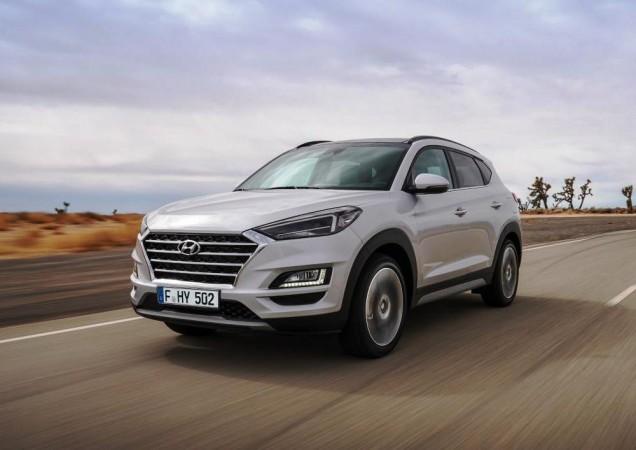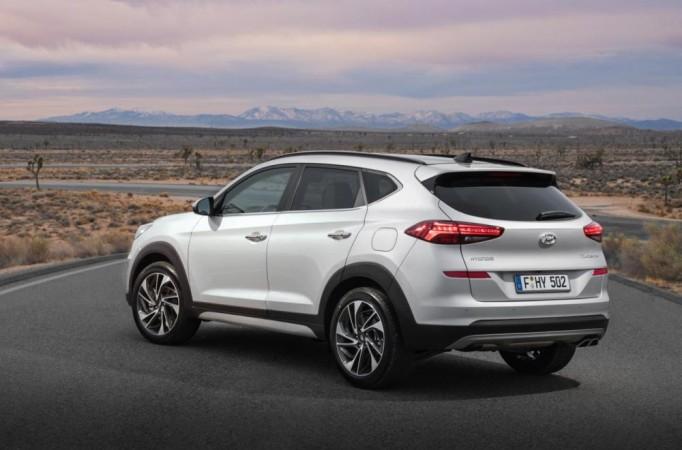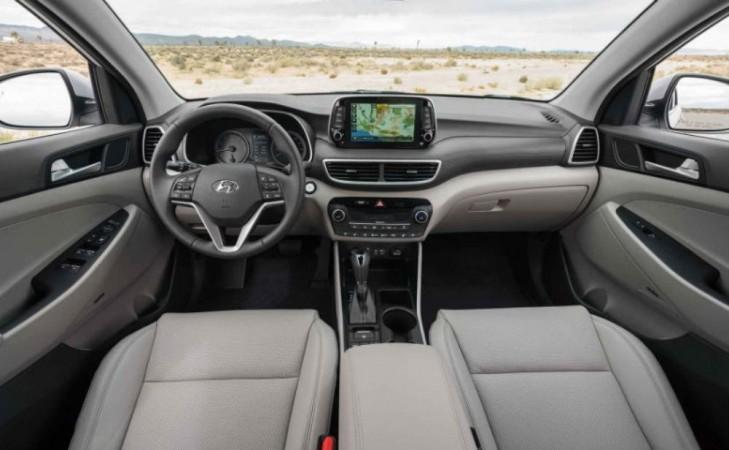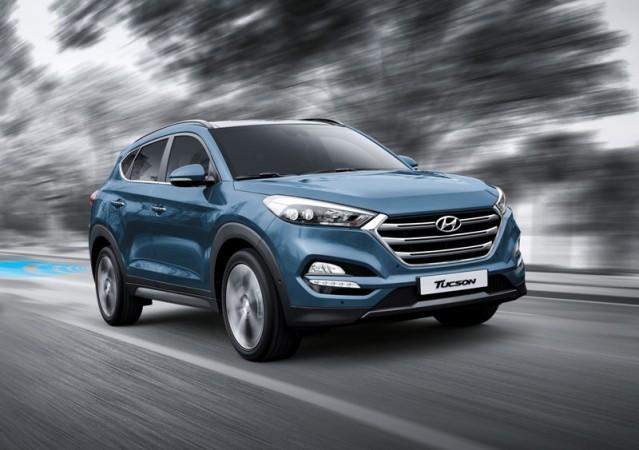
South Korean carmaker Hyundai has revealed the 2019 Tucson at the ongoing New York International Auto Show. The Hyundai Tucson is positioned below the Santa Fe SUV in global markets and locks horn with Jeep Compass in India.
The 2019 Hyundai Tucson comes with a nip and tucks outside, while the interior gets a new layout and more tech. The most noticeable change up front is the new cascading grille in line with all the new Hyundai models. Instead of three slats, the new chrome bathed grille gets four slats. The headlamp design is edgier now and new L-shaped LED daytime running lights adds freshness. Hyundai has also redesigned the front bumper and it houses a pair of newly designed fog lamps.

The side profile of the compact SUV remains unchanged except a new set of diamond cut alloy wheels. At the rear, the taillight design has been slightly tweaked and it now looks more cohesive. The reflectors have moved up on the tailgate and higher-spec trim gets an exhaust finisher.
On the inside, the center stack of the dashboard has been copiously reworked and gets a new floating touchscreen infotainment system. The air condition vents have been moved down to the infotainment system. The dual tone interior theme has been retained while revised instrument cluster and new leather seat design has been added.
The 2019 Hyundai Tucson is also fully loaded with technologies such as electronic parking brake, high beam assist, rain-sensing wipers, second-row USB charger and Qi wireless charging. The SUV also boasts off Forward Collision-Avoidance Assist, lane keeping assist, surround view monitor, driver attention warning, and others.

Apart from the current 2.0-litre four-cylinder petrol engine on sale in the US, Hyundai has added a new 2.4-litre four-cylinder petrol engine with 181bhp. Both the mills come paired to a six-speed automatic transmission.
2019 Hyundai Tucson India launch
Hyundai had re-launched Tucson in India in 2016. The new version is expected to reach Indian shores by mid-2019. The company will also upgrade the current engine to make it compliant with the BS-VI emission standards that come into effect in 2020.


















![India Auto Roundup: Maruti Suzuki, Mahindra have exciting launches in November [details here]](https://data1.ibtimes.co.in/en/full/805520/india-auto-roundup-maruti-suzuki-mahindra-have-exciting-launches-november-details-here.jpg?w=220&h=135)